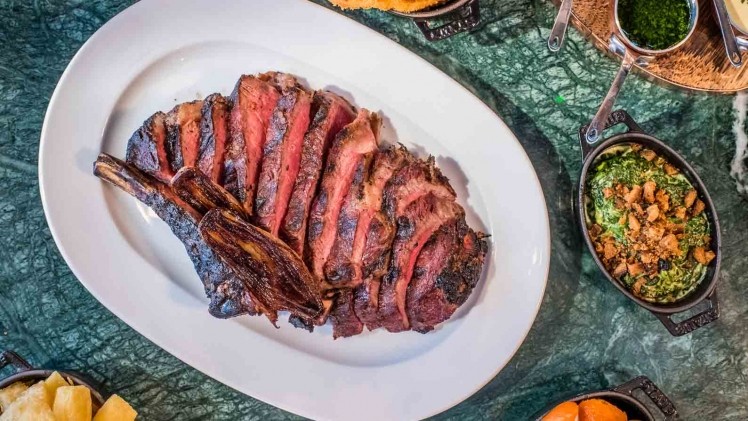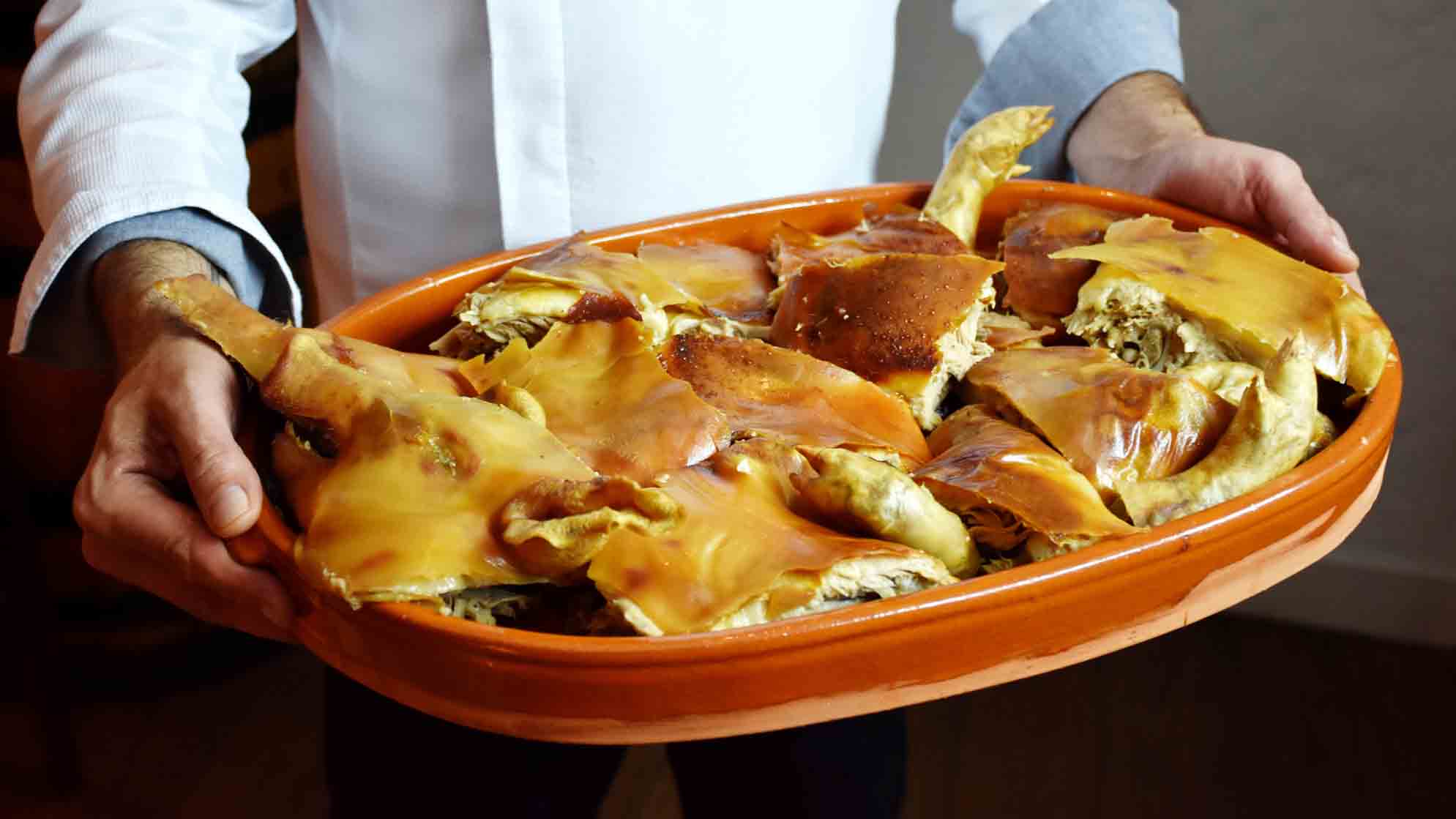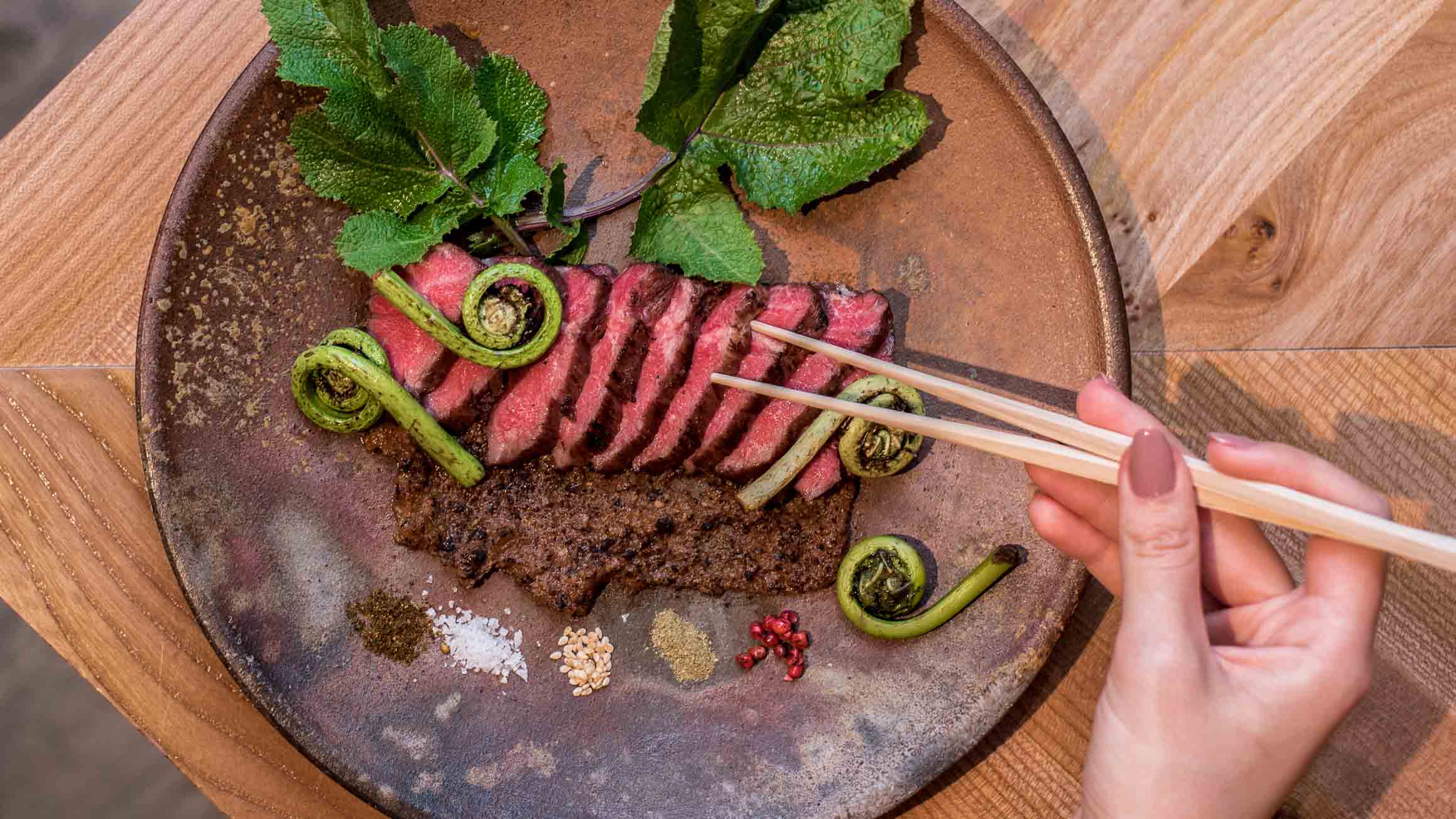Beefing up the Christmas menu: Why more restaurants are opting out of festive fowl

Christmas traditionalists might want to pour themselves a stiff port when they hear that some chefs choose to stuff turkey over the festive period, and we’re not talking with sage and onion.
“I never put it on Christmas menus,” says Dave Mothersill, group head chef at The Salt Room and The Coal Shed restaurants in Brighton and London.
“People really aren’t that bothered about turkey and it’s a difficult bird to break down and cook consistently without things like water baths, so I stay away from it, especially because everyone else is doing it anyway.”
True to his word the festive menus at his restaurants are turkey-free zones with highlights including rib-eye steak with roast bone marrow and chestnut butter and guinea fowl with confit sprouts.
“It’s about staying true to what we do, which is cooking meat and fish over fire,” he adds.
“We’ve also learned to keep it quite safe at Christmas. For people who don’t eat out much the rest of the year, they want something familiar – dishes that they recognise with a festive twist. Flavours like chestnut, sage, clementine.”
Mothersill is not alone in shunning the big bird, according to Allan Munch Hansen, director of foodservice at meat processor Danish Crown.
“While turkey will continue to be king at home, many consumers will cook something different, with goose, beef rib and salmon climbing the ranks,” he says.
“But when it comes to eating out, most will be looking for something different – a welcome change that is still fit for a celebration. Last Christmas, rib-eye steaks proved to be particularly popular, and for some restaurants, porchetta was a favourite on the menu, offering value, leanness and a great depth of flavour.”
Italy’s love of pork is more than matched by the Spanish, many of whom like to sit down to cochinillo (whole roasted suckling pig) at Christmas. Brindisa serves the dish as a pre-order sharing special for parties throughout the festive period, using pigs imported from Segovia.
“It’s a classic in Spain at Christmas,” says Kelly Richardson, head of kitchen operations.
“The meat is so beautifully sweet that it really doesn’t need anything else. We offer gravy if people want it and make a salsa verde with rocket, anchovies and capers, but it’s great just on its own.”
The menu for eight people costs £350 with an 8kg pig providing around 500g to 700g of meat per person. It’s served with minimum fuss on roasted winter vegetables and roast potatoes, which adds up to a pretty healthy margin when you consider each pig costs the restaurant £80 to £90 and requires very little labour.
“The beauty is you can get it ready in the morning when the ovens are free,” says Richardson.
“We cook it for four hours at 1500C, then take it out and leave it until we need it. Then it goes back in at 2200C for 15 to 20 minutes to get wonderful crackling. We serve it whole and can carve for customers at the table, but often they want to do it themselves.”
You won’t find turkey on the menu at Mayfair-based Japanese restaurant Tokimeite for obvious reasons. Instead the restaurant, which is owned by Japanese agriculture cooperative ZeN-Noh, offers an exploration of wagyu beef.
“Because of how busy we are, we can experiment more and get different cuts from different parts of Japan,” says restaurant manager Matthew Hough.
“The customer can experience the difference between wagyu from Kagoshima prefecture, for example, and Joshu [from Gunma]. They are very different because the animals have different diets, so Kagoshima is even more highly marbled and will have a different flavour because of it.”
The choice of cuts at Christmas could include sirloin, rib, ichibo (part of the rump) and chuck roll (from the shoulder), cooked in different ways from tataki or sukiyaki (braised) to grilled in a Josper oven.
“For party menus in our PDR we would create a bespoke menu depending on what the customer is looking for,” says Hough.
Life in the bird yet
Yet giving turkey the chop at Christmas is the exception rather than the rule, says Russell Allen, managing director at meat supplier Aubrey Allen.
“A few years ago people started taking it off menus, but it’s come back. It’s a good way to make your margin on big parties, especially with recent rises in food costs, but chefs are looking at provenance by sourcing free-range and bronze varieties, and seeking to reduce wastage.”
Sales of the company’s pre-prepared turkey parcels, which are individual breasts stuffed with cranberry and orange or chestnut, have grown for this reason, with chefs able to cost menus exactly with no concerns about wastage.
“They know they need 20 parcels for 20 people, rather than having to roast a whole bird and then carve it. With the skills shortage and less room in kitchen, this kind of product really helps.”
A potential skills and staff shortage at Christmas should also make restaurants think about using ready-made gravy.
“When it comes to gravy – the staple of a traditional Christmas dinner – some chefs may never stray from kitchen made, but the quality, profile and depth of modern, ready-made variants, such as our three-strong No.1 Gravy range, means that their usage really helps busy kitchens safeguard consistency and offer gravy as it should be,” says Jonathan Harvey-Barnes, senior business development chef at Essential Cuisine.
A shortage of skills is not a problem at Heston Blumenthal’s The Hind’s Head pub in Bray, which takes a meticulous approach to the turkey come Christmas. First the breast is brined for six hours with rosemary, thyme, bay, garlic and black pepper, before it is rinsed and rubbed with an intensely savoury turkey butter (made with roasted turkey skin) and slow cooked in a water bath at 600C. It is finally roasted until golden and served with triple-cooked roast potatoes.
“It’s the best way to get consistency,” says head chef Pete Grey. “The salt solution adds flavour and keeps moisture in. It takes it to the next level.”
At the Bel & Dragon group of six country inns, group head chef Ronnie Kimbugwe offers options such as suckling pig and chateaubriand at Christmas. Yet it’s turkey that is hands down the most popular dish. “We do thousands of meals in December and two-thirds of the mains are turkey,” he says. “People eat out three or four times in the month and will have turkey every time. They love it.”
These kinds of numbers mean being super efficient in the kitchen is essential, which is why the group buys in pre-butchered turkey breasts from local butcher Thatcham. At £11.20/kg compared to £7.80/kg for a whole bird it’s more expensive, but the benefits more than outweigh the cost, says Kimbugwe.
“It’s a pricey way of doing it, but I’d rather take the hit and get it right. The meat is consistently great, easy to cook and portion, and there’s no wastage.”
The 2kg breasts are roasted on vegetables with stock made from turkey bones, which ensures the meat is moist and easy to carve, with 12-15 portions from each breast.
Come 26 December, turkey is the last thing anyone wants to eat, with the meat off the menu until Christmas the following year.
“It’s a hard sell any other time of the year,” admits Kimbugwe. “I’ve had enough it by January anyway.”






















